15 American Cars So Ugly They Became Legends
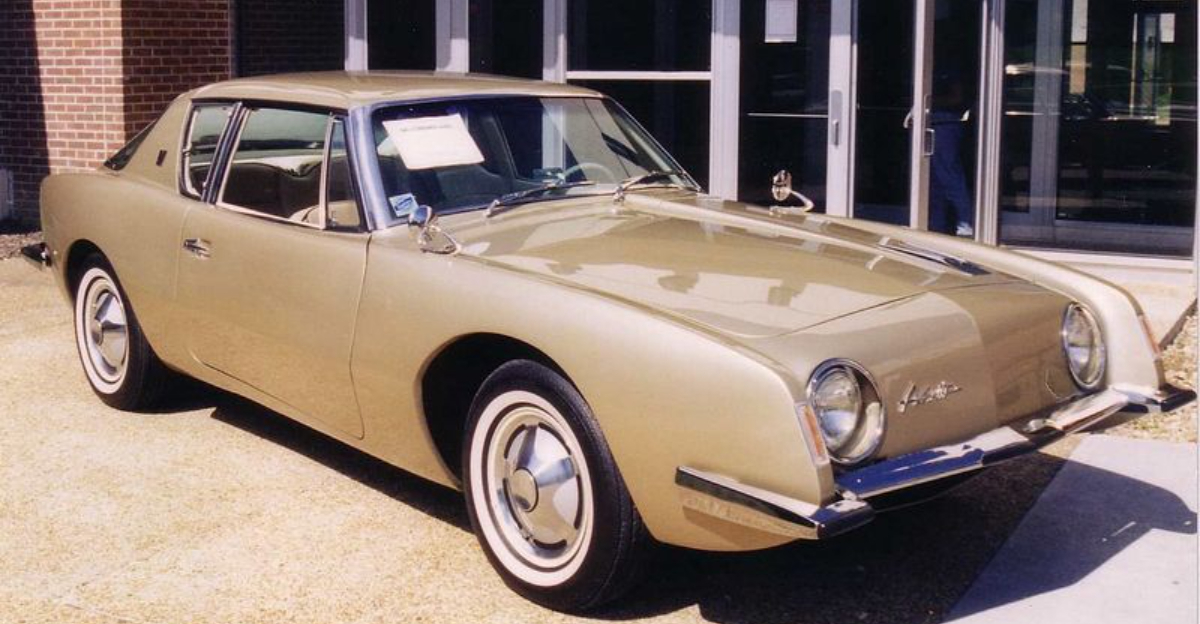
In the world of automobiles, form usually follows function—but every now and then, a car rolls off the assembly line with a face only a gearhead could love.
These 15 American cars didn’t exactly win beauty contests, but they sure won attention. With their bold (read: bizarre) designs, quirky proportions, and sometimes laugh-out-loud styling choices, they’ve become legends—not despite their looks, but because of them.
From fishbowl-shaped windows to grilles that resemble startled expressions, these unconventional rides have made permanent pit stops in our collective memory. Love them, mock them, or secretly want one in your garage, there’s no denying these automotive oddballs carved their own unique path through car culture.
So buckle up and prepare for a joyride through 15 of the most unforgettable, unapologetically ugly American cars that prove one undeniable truth: in the automotive world, weird is wonderful—and sometimes, “what were they thinking?” turns into “iconic.”
1. AMC Gremlin (1970–1978)
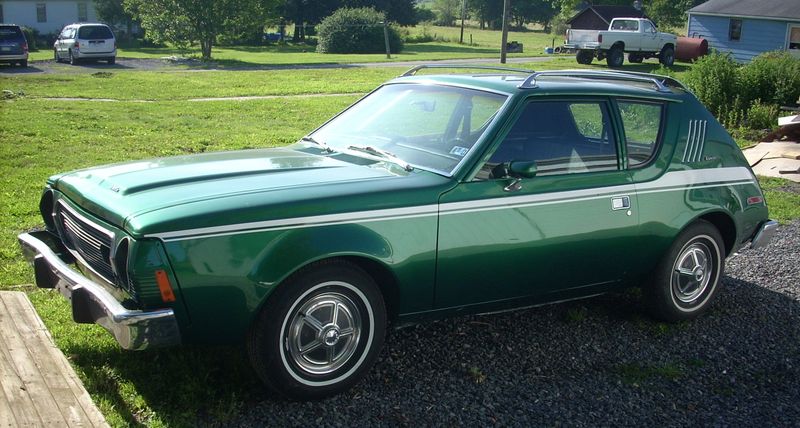
The AMC Gremlin wasn’t just a car; it was an experiment in truncation. Picture a standard compact vehicle that’s been abruptly sliced in half, leaving a rear end that’s as perplexing as it is unforgettable.
This hatchback’s design seemed to ignore aerodynamics in favor of curiosity, making it an icon of its era. Driving the Gremlin was like taking the wheel of a rolling question mark. Its bold, unapologetic rear end might have made you question its creator’s intentions, but it also ensured that the Gremlin was etched into the annals of automotive history.
The Gremlin is proof that sometimes, baffling design choices create the most memorable cars. Despite its unconventional looks, or perhaps because of them, the Gremlin found a loyal following. Its quirky appearance, coupled with the undeniable charm of the seventies, made it a car that was as much about personality as practicality.
2. AMC Pacer (1975–1980)
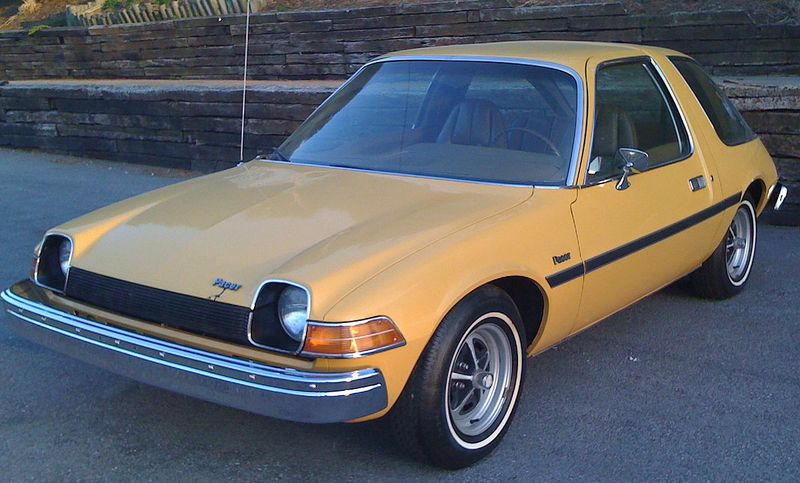
With its wide, bubble-like windows, the AMC Pacer was the goldfish bowl of the car world. It was almost as if the designers thought drivers should never miss a view, no matter how mundane.
Its rounded, aquarium-esque design was certainly eye-catching. The Pacer’s unconventional shape made it an instant standout, even among the eclectic vehicles of its time. Its unique styling was almost as polarizing as it was innovative, causing debates about beauty in function vs. form.
While it may not have been everyone’s cup of tea, the Pacer’s charm lay in its bold refusal to conform. It stood as a testament to a time when car companies weren’t afraid to take risks with design—even if it meant rolling out something that resembled a fish tank on wheels.
3. Ford Pinto (1971–1980)
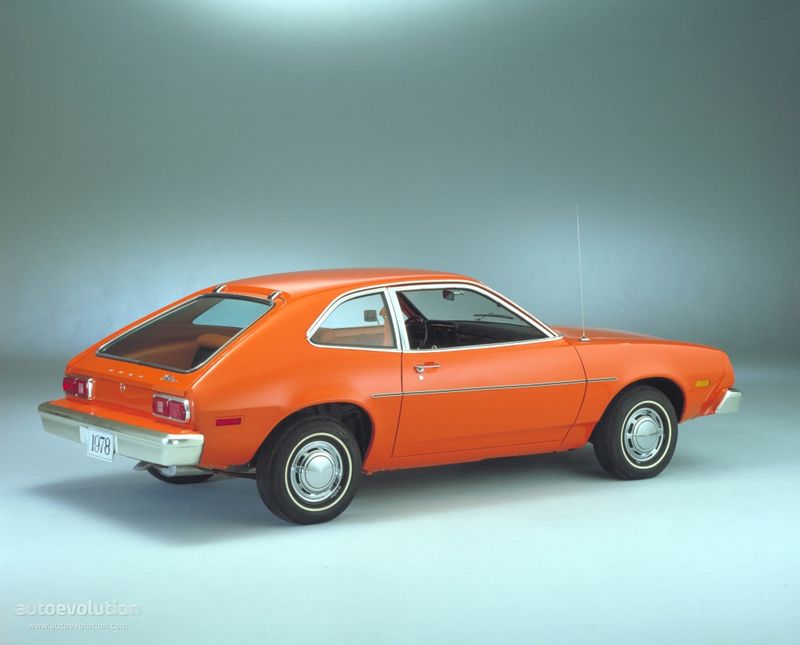
The Ford Pinto had a reputation that was as fiery as its looks were forgettable. Known for its explosive tendencies in rear-end collisions, the Pinto’s design was as infamous as its safety record.
Yet, its mundane appearance has etched it a place in automotive history. The Pinto’s plain design masked a vehicle that was anything but ordinary. As the punchline to many a joke, this car’s notoriety came from more than just its looks.
The understated styling only added to its legend. Despite—or perhaps because of—its lackluster appearance, the Pinto managed to become a cultural icon. It serves as a reminder that sometimes, infamy and fame are two sides of the same coin, forever linked by tales of the unexpected.
4. Pontiac Aztek (2001–2005)
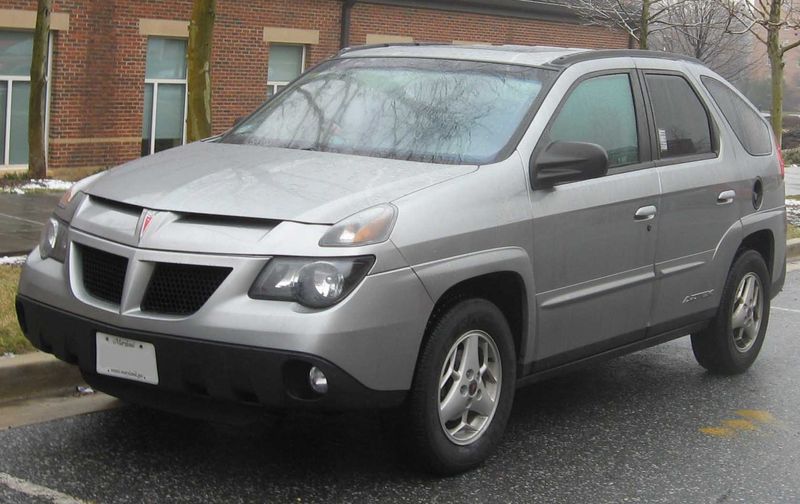
The Pontiac Aztek is a car that even its own designers might have trouble loving. With an angular, almost origami-like exterior, the Aztek’s aesthetic choices made it a spectacle on the roads.
The design seemed to defy traditional beauty standards, earning it a cult following for its audacity. This SUV’s jagged lines and unusual silhouette made it an icon of early 2000s automotive experimentation. Love it or hate it, the Aztek’s look was impossible to ignore, making it a frequent topic of conversation among car enthusiasts.
While its appearance was divisive, the Aztek’s bold design choices have earned it a spot in the pantheon of memorable vehicles. It stands as a testament to a time when car makers were unafraid to challenge the status quo, even if it meant creating a vehicle that looked like a mishmash of spare parts.
5. Chevrolet Chevette (1976–1987)
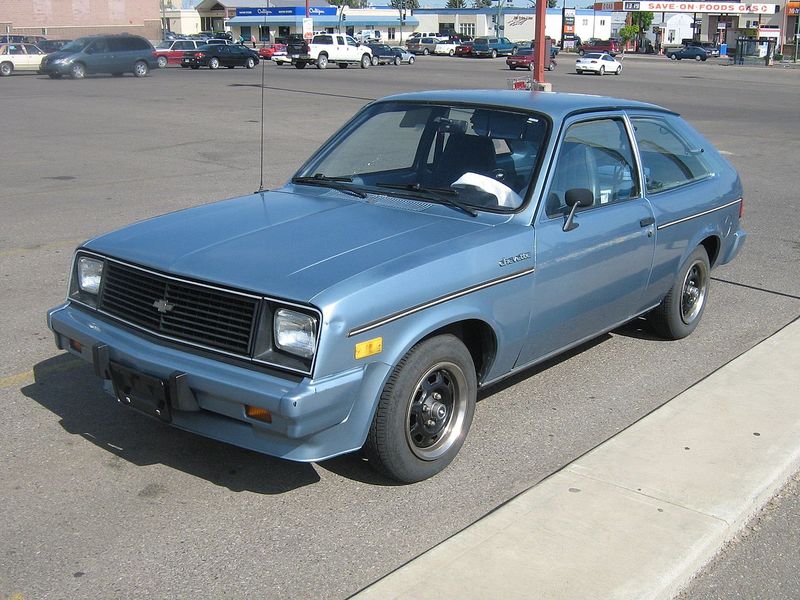
The Chevrolet Chevette was the automotive equivalent of comfort food: predictable, unassuming, and oddly satisfying. Its boxy, utilitarian design was simplicity at its finest, making it the perfect car for those who valued function over flair.
Though it may not have been a head-turner, the Chevette’s charm lay in its no-nonsense demeanor. It was a car that knew exactly what it was—and wasn’t afraid to be just that. Its practical design made it a popular choice for those needing reliable transportation.
In a world full of over-the-top aesthetics, the Chevette’s humble appearance was a breath of fresh air. Its legacy endures as a reminder that sometimes less truly is more, and that beauty doesn’t always have to come with bells and whistles.
6. Chrysler PT Cruiser (2001–2010)

The Chrysler PT Cruiser rolled onto the scene like a retro toaster on wheels. With its vintage-inspired design and unique silhouette, this car was a nod to the past while firmly planted in the 21st century.
The Cruiser’s bulbous shape and distinctive grille made it instantly recognizable, sparking conversations about its nostalgic charm. For some, it was a throwback to simpler times; for others, it was a puzzling anachronism in a world of sleek modernity.
Despite mixed reviews, the PT Cruiser’s design earned it a place in automotive lore. Its blend of classic and contemporary elements made it a talking point for those who appreciated cars with character. It symbolized a time when car manufacturers weren’t afraid to look backwards to move forwards.
7. AMC Matador (1974–1978)

The AMC Matador always looked like it had just heard a shocking piece of gossip. Its wide-eyed front end gave it an expression of perpetual surprise, endearing it to those who enjoyed a car with personality.
Despite its name, which suggested a fighter’s elegance, the Matador’s design choices leaned more towards the quirky and unexpected. This full-sized vehicle was as much about bold statements as it was about providing a comfortable ride.
The Matador remains a beloved oddity in car history, remembered for its distinctive looks and unique charm. Its design invites us to embrace the unexpected and enjoy a little whimsy on the road, proving that personality often trumps conventional beauty.
8. Cadillac Seville “Bustleback” (1980–1985)
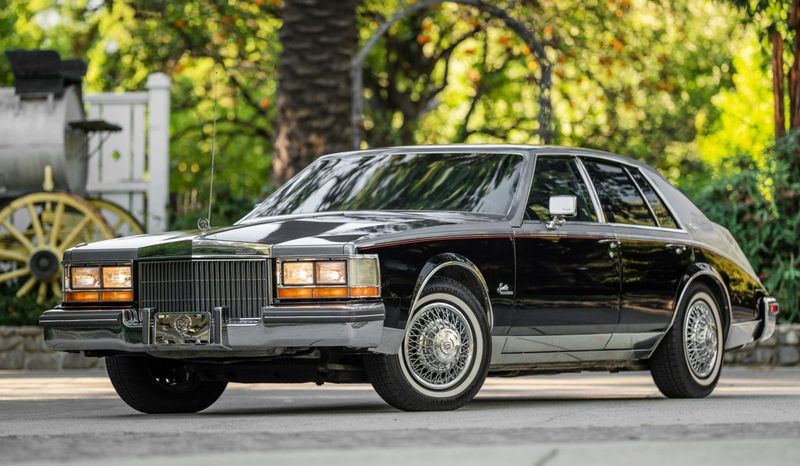
The Cadillac Seville Bustleback was a car that wore its curves with pride. Designed with a rear end reminiscent of a whale’s backside, it was unapologetically grand in its presence.
This luxury vehicle dared to be different, incorporating a distinctive “bustle” design that divided opinions and yet, attracted attention wherever it went. It was a car that commanded notice, whether for admiration or bewilderment.
The Bustleback remains a symbol of the audacious side of 1980s design. Its unique styling choices reflect a time when car makers were willing to push boundaries, embracing bold aesthetics that dared to defy the norm. It’s a reminder that elegance sometimes comes in unexpected forms.
9. Ford Mustang II (1974–1978)
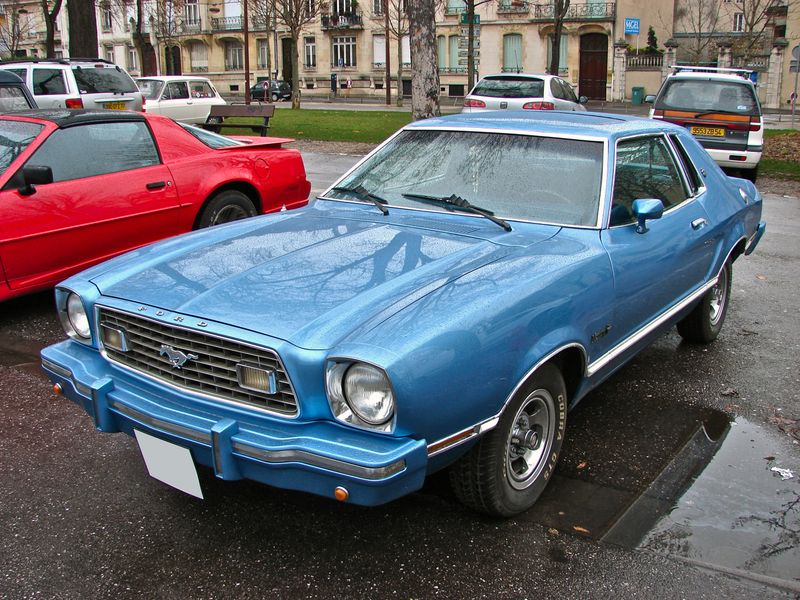
The Ford Mustang II was the nerdy cousin in the Mustang family, forever overshadowed by its cooler relatives. Its compact design was a departure from the classic muscle car image, making it a curious chapter in Mustang history.
Despite being smaller and less powerful, the Mustang II carved out its own niche in the automotive world. It was the car that tried to reinvent itself during a time when fuel efficiency was becoming paramount. Though it may not have captured the hearts of purists, the Mustang II’s legacy lies in its attempt to adapt to changing times.
It stands as a testament to versatility, proving that even iconic brands must sometimes embrace practicality over power.
10. Chevrolet SSR (2003–2006)

The Chevrolet SSR was a vehicle that couldn’t quite make up its mind. Part convertible, part truck, and wholly unusual, it was a curious addition to the automotive landscape.
With its retro styling and folding hardtop, the SSR had an undeniable flair that drew attention wherever it roamed. It was a bold statement piece, both confusing and intriguing in equal measure.
Despite its hybrid identity, or perhaps because of it, the SSR captured the imaginations of those who valued individuality over convention. It stands as a reminder that sometimes the best cars are those that refuse to fit neatly into any category.
11. Chevrolet Vega (1971–1977)
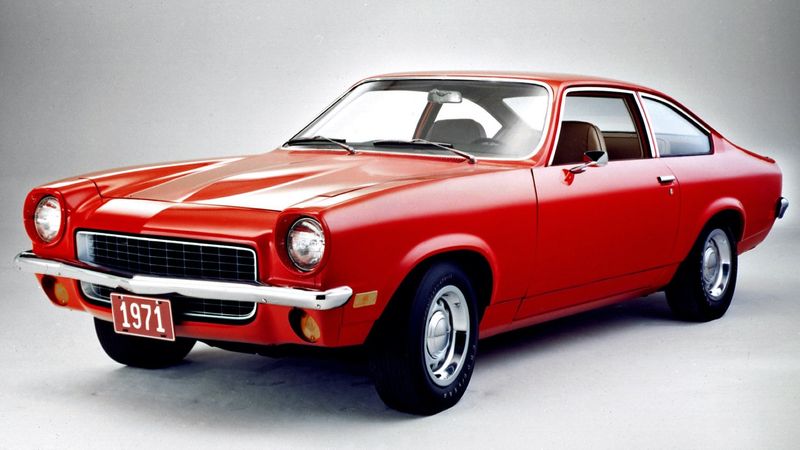
The Chevrolet Vega was a car that seemed perpetually ready to leap into action, with a front end resembling a frog poised on a lily pad. Its small, compact design was endearing to some and baffling to others.
Though its looks might have been amphibian-inspired, the Vega’s practical, budget-friendly nature made it a popular choice for many. It was an economical option during an era when efficiency was becoming increasingly important.
While the Vega may not have been the most glamorous vehicle on the road, it left an indelible mark thanks to its distinctive styling. It serves as a reminder that sometimes, the best things come in small, quirky packages.
12. Studebaker Avanti (1962–1963)
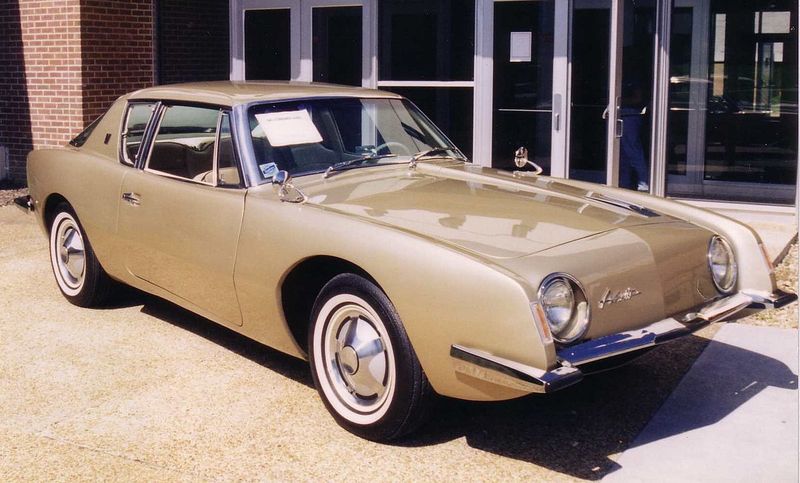
The Studebaker Avanti looked ready to pounce, with a front end that bore an eerie resemblance to an angry reptile. Its futuristic design was ahead of its time, capturing imaginations and dividing opinions.
Though its production was short-lived, the Avanti remains a beloved classic, celebrated for its daring aesthetic choices. It was a bold leap into the unknown, blending innovation with a touch of the avant-garde.
The Avanti’s legacy is one of daring to be different, proving that sometimes, breaking the mold results in timeless designs. It stands as a beacon for those who appreciate bold, visionary styling that defies the ordinary.
13. Lincoln Blackwood (2002)

The Lincoln Blackwood was a luxury pickup truck that left everyone scratching their heads. It combined high-end features with the practicality of a pickup, creating a vehicle that confused more than it impressed.
Despite its unconventional approach, the Blackwood’s plush interior and bold styling made it a symbol of opulence on wheels. It was an experiment in blending luxury with utility, even if it didn’t quite hit the mark.
The Blackwood remains a testament to innovation and risk-taking, a vehicle that dared to imagine a new kind of luxury. It’s a reminder that sometimes, the most memorable cars are those that challenge convention and dare to dream big.
14. Plymouth Prowler (1997–2002)
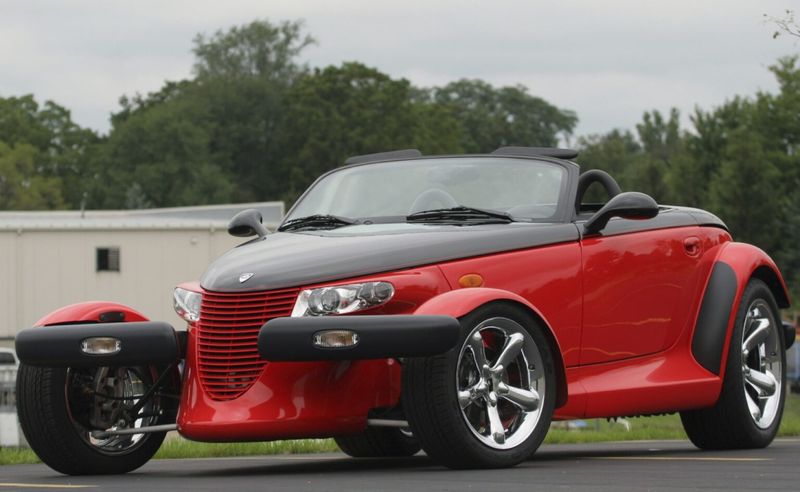
The Plymouth Prowler looked like it had just driven off a Halloween set, with its hot rod-inspired design and unique appearance.
It was a car that embraced its eccentricity, becoming a visual spectacle on the roads. Its open-wheel design and retro styling made the Prowler a standout, capturing the imaginations of those who longed for the golden age of hot rods.
It was a bold choice for those who valued flair over function. Though not the most practical car, the Prowler’s legacy is one of daring to be different. It serves as a reminder that sometimes, the best cars are those that embrace their quirks and wear them with pride.
15. Ford Edsel (1958–1960)

The Ford Edsel is perhaps one of the most infamous cars in history, with a grille resembling a potato-shaped nightmare. Its bold design choices were as polarizing as they were unforgettable.
Marketed as the car of the future, the Edsel’s unconventional looks led to its downfall, but also cemented its place in automotive lore. It was a classic case of being ahead of its time, a victim of its own ambition.
The Edsel remains a symbol of how even the most well-intentioned designs can go awry, leaving behind a legacy that’s as much about learning from mistakes as it is about celebrating innovation. It’s a reminder that the road to greatness is often paved with unexpected turns.
